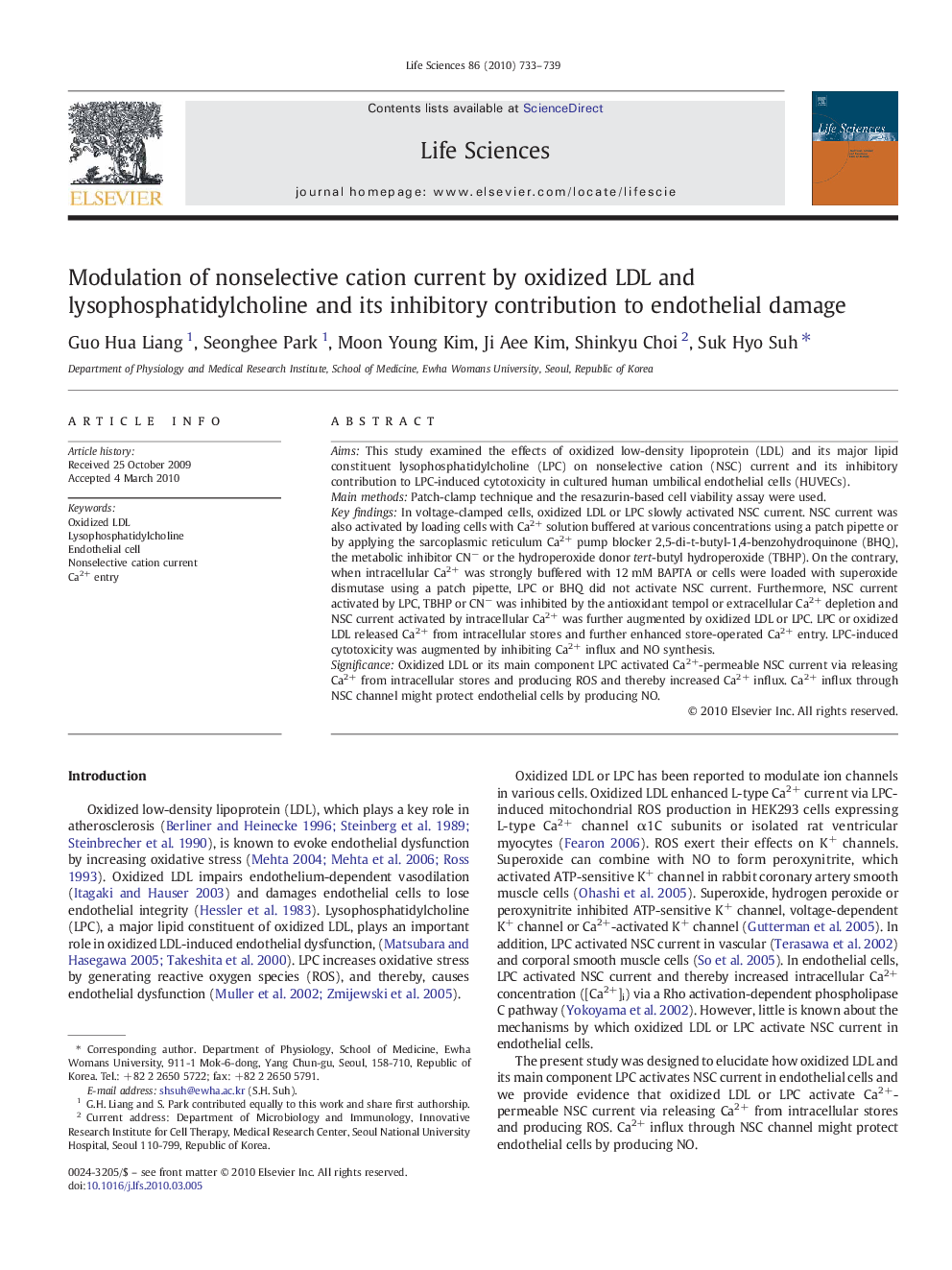| کد مقاله | کد نشریه | سال انتشار | مقاله انگلیسی | نسخه تمام متن |
|---|---|---|---|---|
| 2552064 | 1560702 | 2010 | 7 صفحه PDF | دانلود رایگان |

AimsThis study examined the effects of oxidized low-density lipoprotein (LDL) and its major lipid constituent lysophosphatidylcholine (LPC) on nonselective cation (NSC) current and its inhibitory contribution to LPC-induced cytotoxicity in cultured human umbilical endothelial cells (HUVECs).Main methodsPatch-clamp technique and the resazurin-based cell viability assay were used.Key findingsIn voltage-clamped cells, oxidized LDL or LPC slowly activated NSC current. NSC current was also activated by loading cells with Ca2+ solution buffered at various concentrations using a patch pipette or by applying the sarcoplasmic reticulum Ca2+ pump blocker 2,5-di-t-butyl-1,4-benzohydroquinone (BHQ), the metabolic inhibitor CN− or the hydroperoxide donor tert-butyl hydroperoxide (TBHP). On the contrary, when intracellular Ca2+ was strongly buffered with 12 mM BAPTA or cells were loaded with superoxide dismutase using a patch pipette, LPC or BHQ did not activate NSC current. Furthermore, NSC current activated by LPC, TBHP or CN− was inhibited by the antioxidant tempol or extracellular Ca2+ depletion and NSC current activated by intracellular Ca2+ was further augmented by oxidized LDL or LPC. LPC or oxidized LDL released Ca2+ from intracellular stores and further enhanced store-operated Ca2+ entry. LPC-induced cytotoxicity was augmented by inhibiting Ca2+ influx and NO synthesis.SignificanceOxidized LDL or its main component LPC activated Ca2+-permeable NSC current via releasing Ca2+ from intracellular stores and producing ROS and thereby increased Ca2+ influx. Ca2+ influx through NSC channel might protect endothelial cells by producing NO.
Journal: Life Sciences - Volume 86, Issues 19–20, 8 May 2010, Pages 733–739